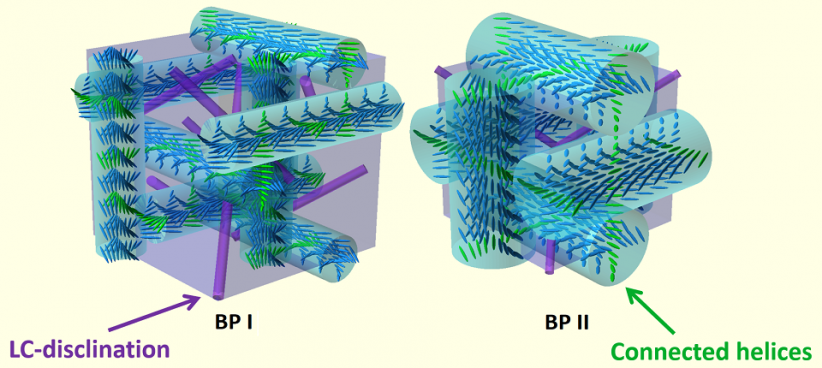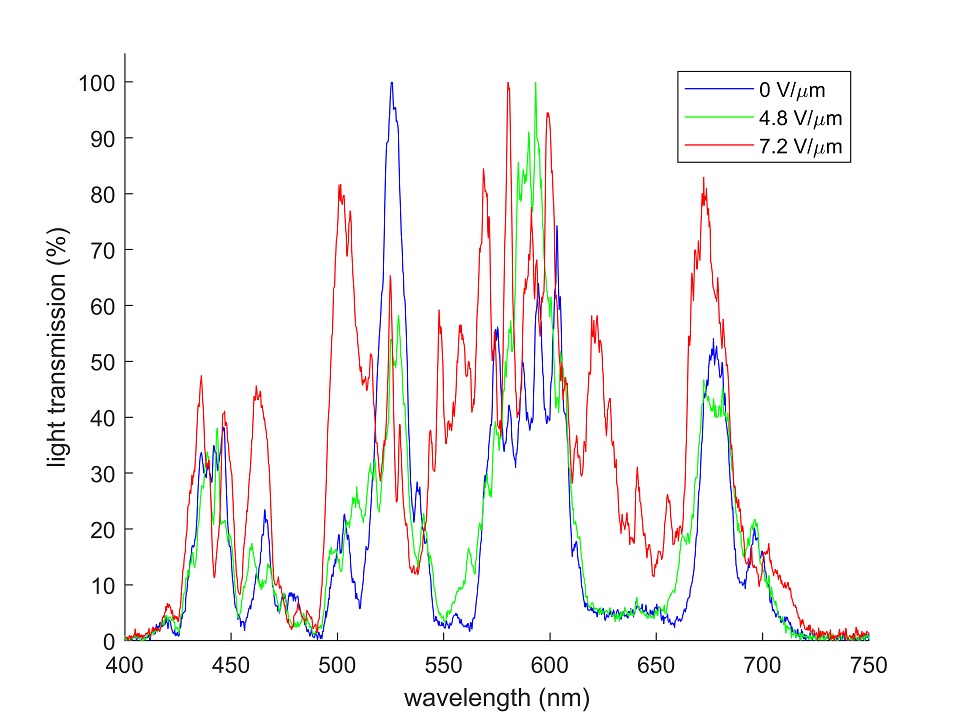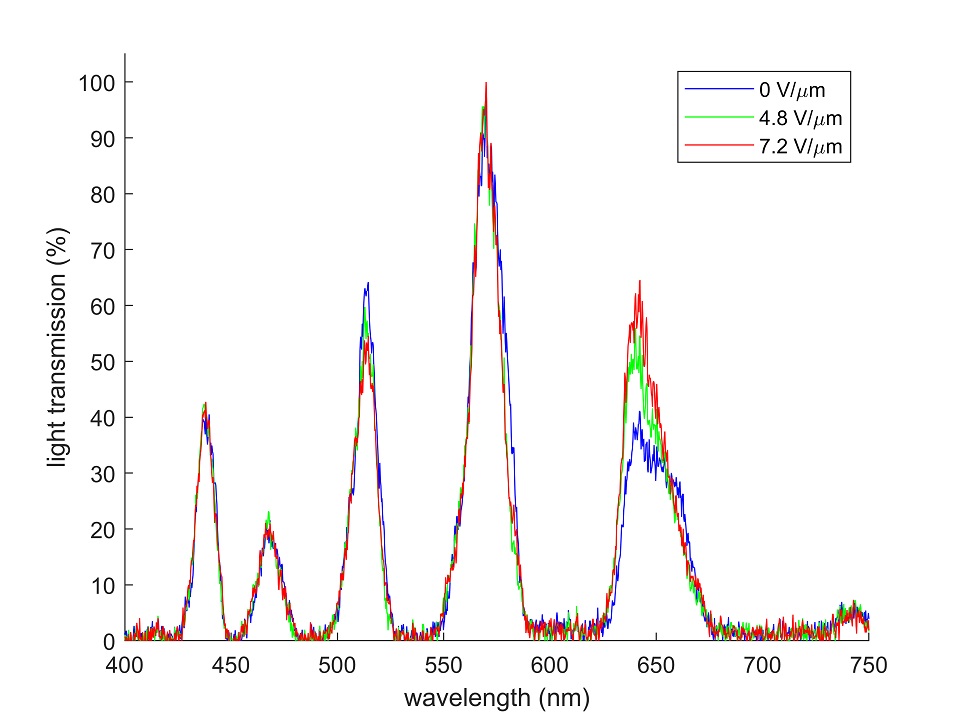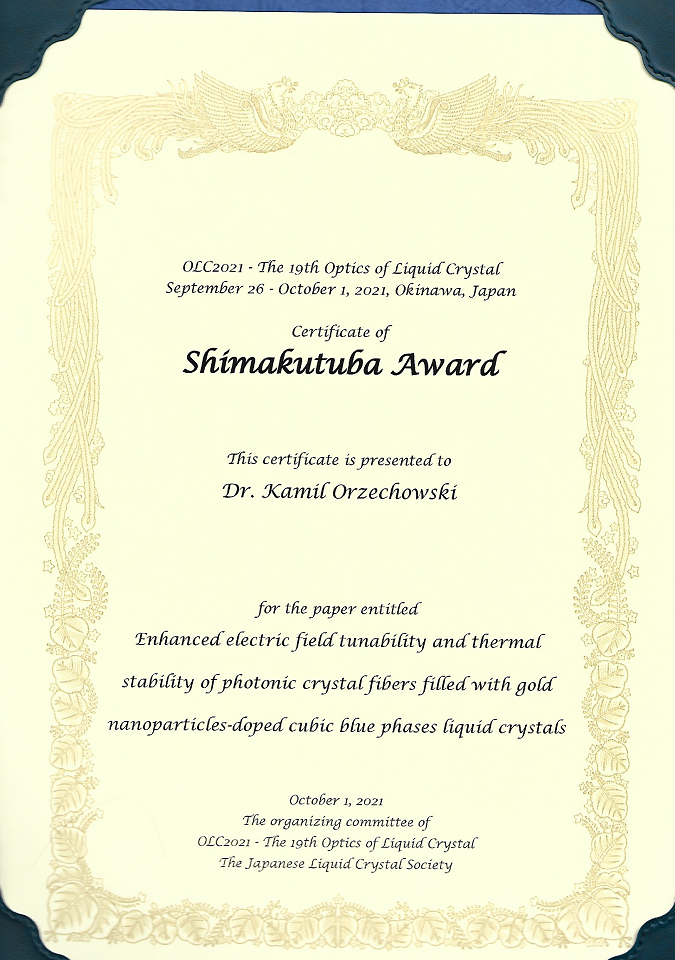Scientists at WUT continue research on optical fibre photonic systems based on liquid crystals
At present, from the perspective of optical fibre communications, we need further progress in eliminating certain defects of photonic systems under research, such as insufficiently quick response time to the external electric field (tens of milliseconds) and the necessity to use high steering voltage due to a big diameter of the photonic optical fibre (hundreds of volts). Scientists at WUT are working on solving these problems. Their research project is implemented as part of the FOTECH-2 research grant funded within the programme ‘Excellence Initiative – Research University’ implemented at the Warsaw University of Technology.

A scheme of molecular order of cubic structures corresponding with elementary cells of blue phases BP I and BP II.
Since 2004 a research team headed by Professor Tomasz Woliński from the Faculty of Physics at WUT has been doing pioneering research on the new class of microstructural photonic optical fibres filled with liquid crystals (mainly in a nematic phase), the so-called photonic liquid crystal fibres (PLCFs). Although the concept has been known for almost two decades, it still has a huge application potential owing to the creation of small advanced photonic systems ensuring electro-optical modulation, switching, or detection, among other things.
Currently, PLCFs with chiral blue phase liquid crystals (BPLC) doped with nanoparticles of gold or monomers are under research. The choice of blue phase liquid crystal as a filling for a photonic optical fibre has numerous benefits: short switching times as compared to other liquid crystal phases (<1ms), Bragg reflection for ultraviolet and visible light wavelengths, optical isotopy, and polarization insensitivity in a macroscopic scale, among other things. The mentioned properties make this material interesting not only from the point of view of liquid crystal display but also in the context of their application in new generation photonic devices.
‘As part of the research we improved the properties of PLCF systems thanks to the devised blue phase liquid crystal mixture doped with spherical nanoparticles of gold with an appropriately modified surface, which ensures a high degree of interaction of nanoparticles with a liquid crystal matrix,’ explains Kamil Orzechowski, DSc from the Faculty of Physics at WUT.
‘The introductory tests of the prepared photonic systems displayed greater temperature stability and sensitivity to the external electric field as compared to undoped systems,’ says Kamil Orzechowski, DSc. ‘Moreover, we have proved the possibility of monitoring the degree of the intensity of light propagated in a photonic optical fibre for selected visible spectrum wavelengths utilizing the external electric field,’ he continues.
Research findings were presented at an international conference ‘19th Optics of Liquid Crystals Conference’ in Okinawa (Japan), which took place online from 26.09 to 1.10. The competition committee awarded the poster of Dr Kamil Orzechowski’s team titled ‘Enhanced electric field tunability and thermal stability of photonic crystal fibres filled with gold nanoparticles-doped cubic blue phases liquid crystals’ with a distinction (OLC2021 Shimakutuba Award). The distinction was awarded by the conference organisational committee, whose members belong to the Japanese Liquid Crystal Society.
At the same time, the International Liquid Crystal Society selected the photo of polymer-stabilised chiral blue phase liquid crystal by Dr Orzechowski a picture of the month in October 2021.
The FOTECH-2 research grant is implemented by the WUT Faculty of Physics in collaboration with the Faculty of New Technologies and Chemistry at MUT, Faculty of Chemistry at Warsaw University, and Faculty of Electronics and Information Technology at WUT. Under the research project, scientists from the Faculty of Physics started a collaboration with the Faculty of Photonics at National Sun Yat-Sen University in Kaohsiung in Taiwan, whose support is of great help when analysing the properties of complex liquid crystal photonic structures doped with nanoparticles of gold and monomers.
The project ‘Self-organising photonic structures with increased efficiency of re-tuning and temperature stability based on chiral blue phase liquid crystals doped with nanoparticles of gold and monomers’ is funded within the research grant of Research Centre POB Photonic Technologies of the project ‘Excellence Initiative - Research University’, implemented at the Warsaw University of Technology.
Research team:
Kamil Orzechowski, DSc; Olga Strzeżysz, DSc; Wiktor Lewandowski, PhD; Martyna Tupikowska, MSc; Piotr Lesiak, PhD, DSc, associate professor; Tomasz Osuch, PhD, DSc.
Article written by Kamil Orzechowski, DSc





